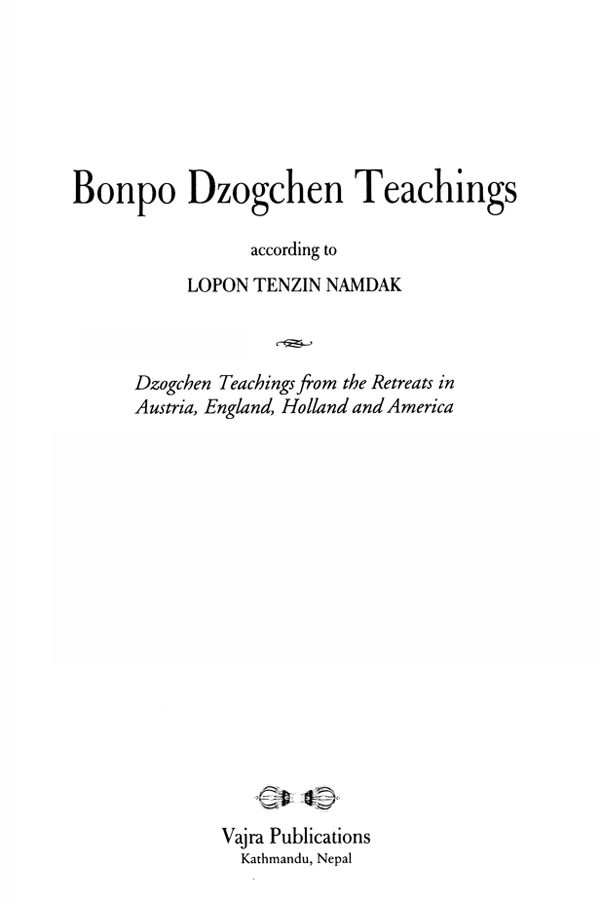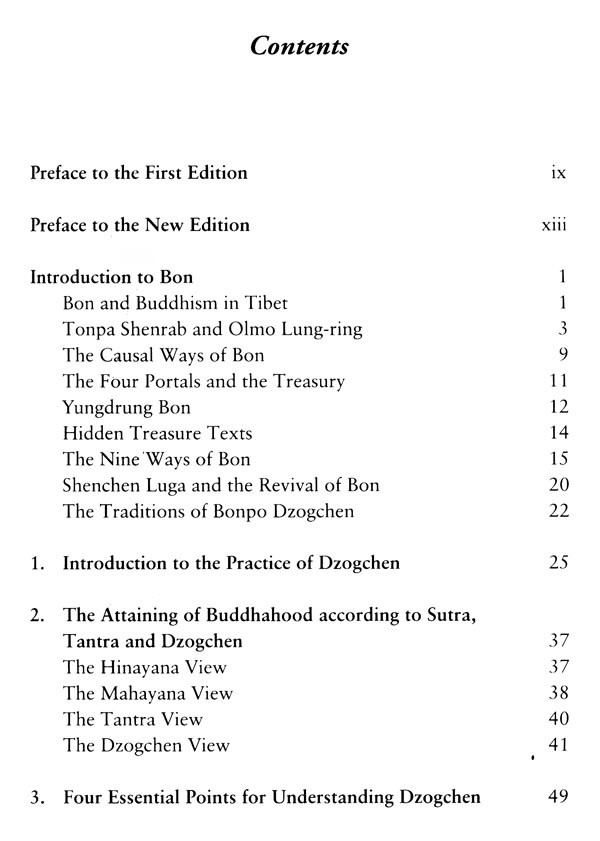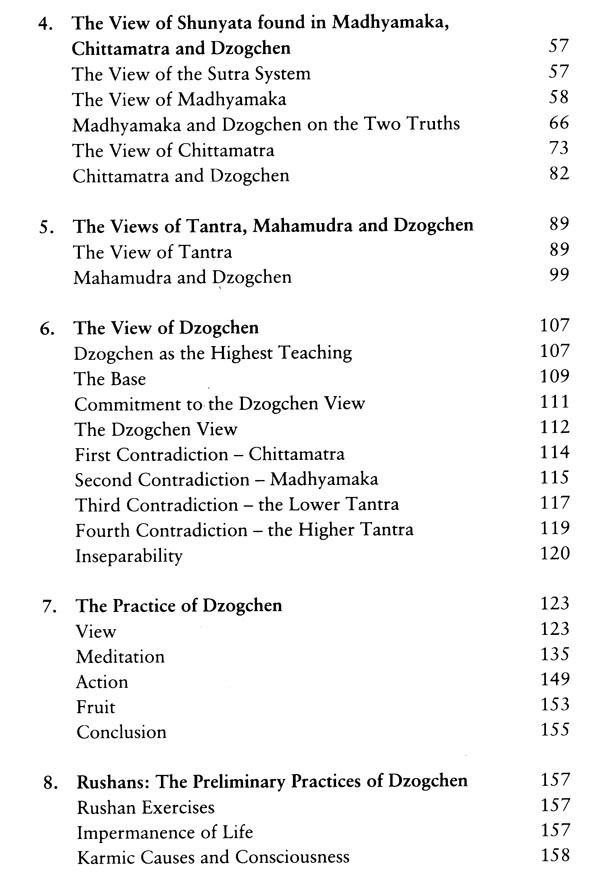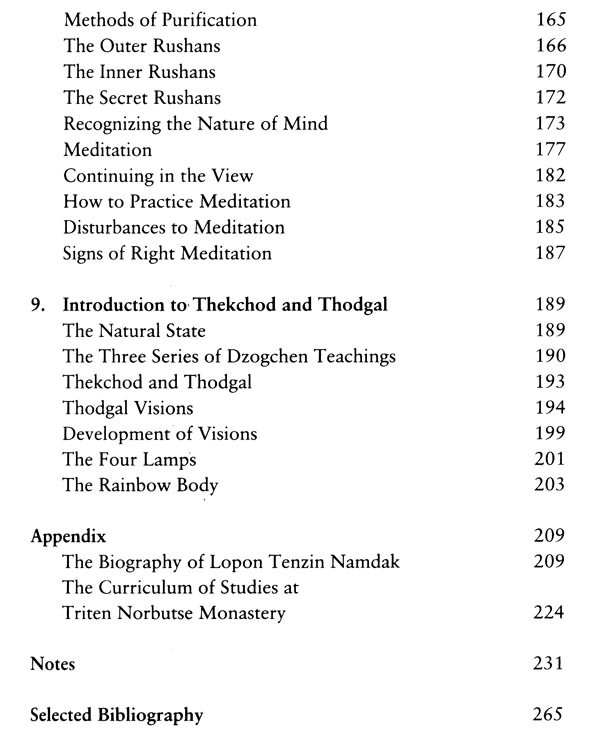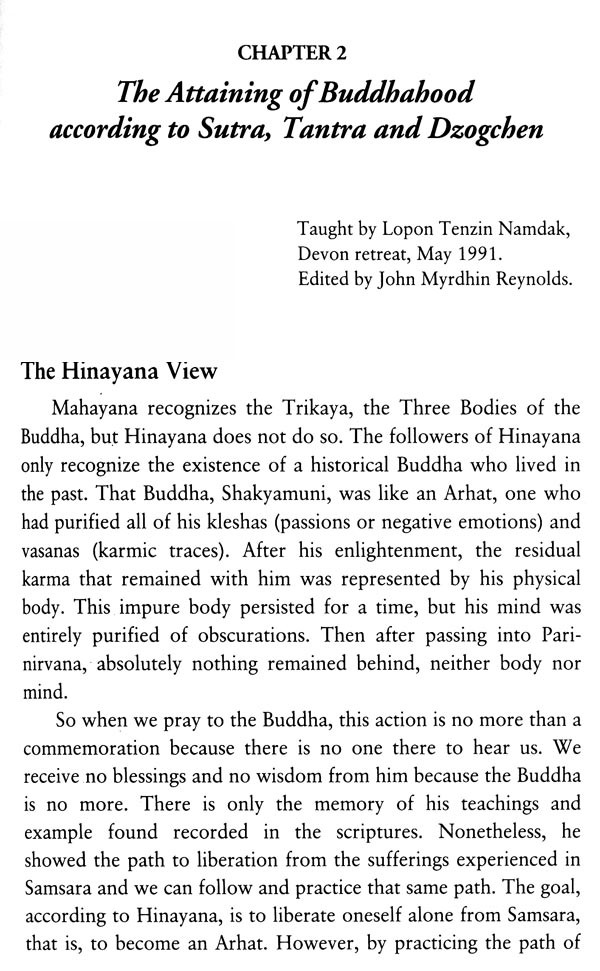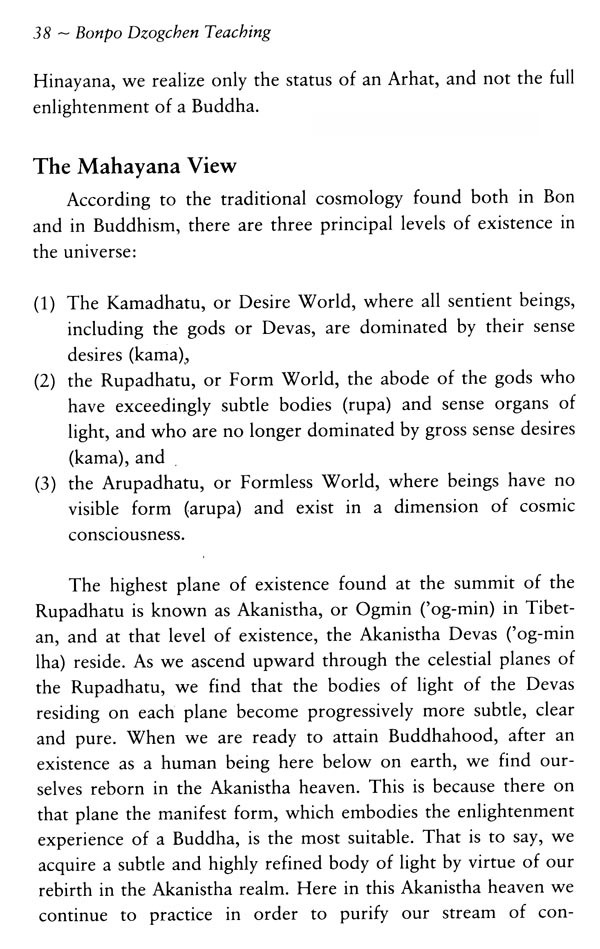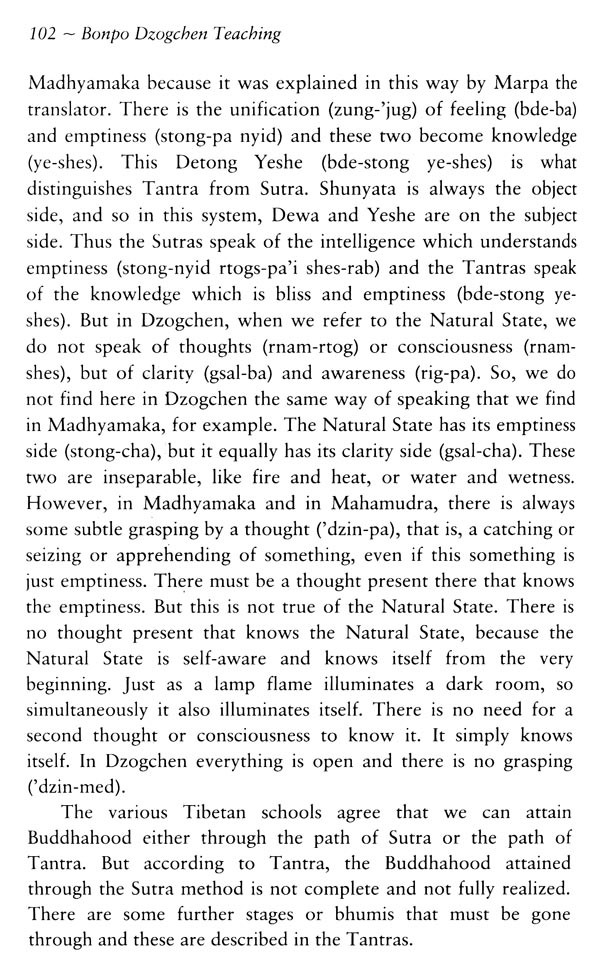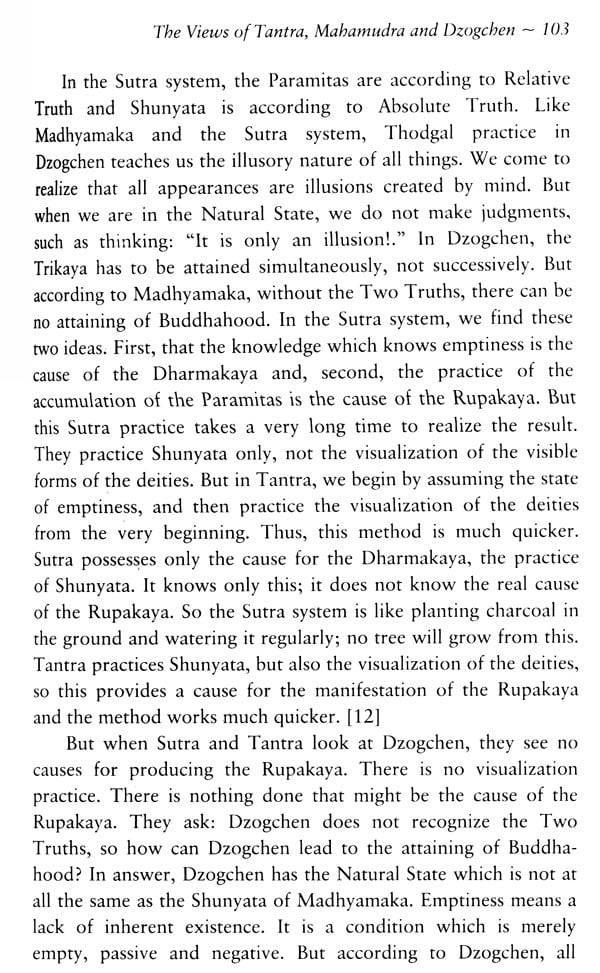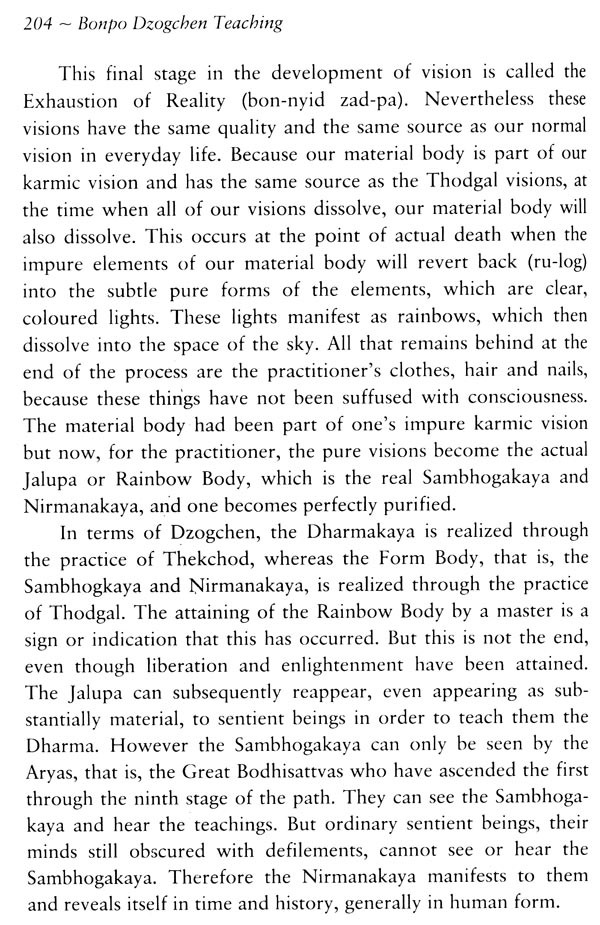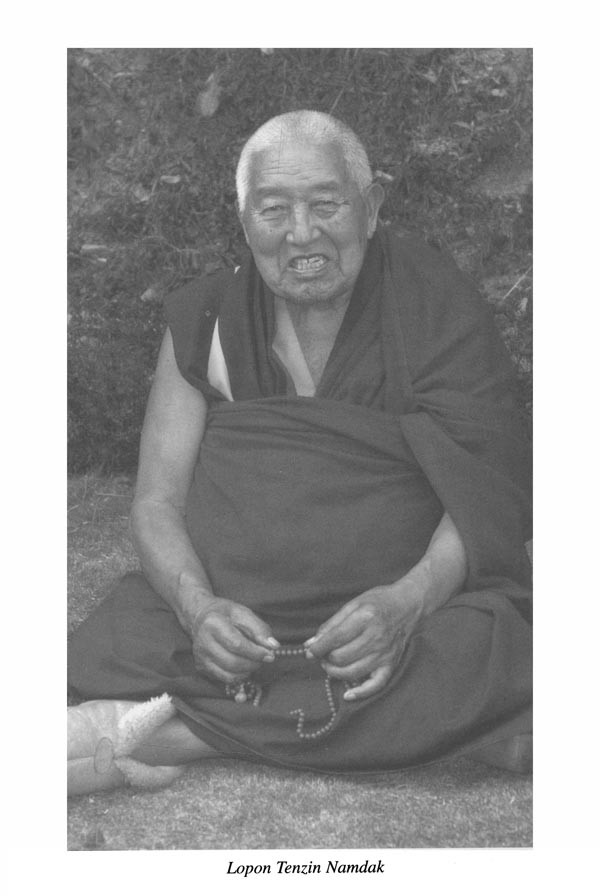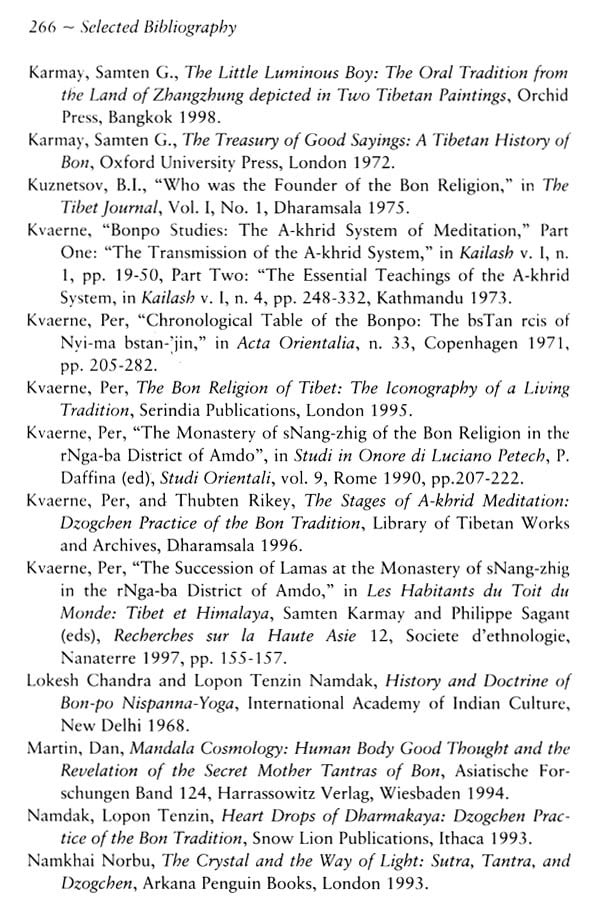
Bonpo Dzogchen Teachings
Book Specification
| Item Code: | UAO222 |
| Author: | Lopon Tenzin Namdak |
| Publisher: | Vajra Publications, Nepal |
| Language: | English |
| Edition: | 2012 |
| ISBN: | 9789994678860 |
| Pages: | 274 (Throughout B/w Illustrations) |
| Cover: | PAPERBACK |
| Other Details | 9.50 X 7.00 inch |
| Weight | 430 gm |
Book Description
Lopon Rinpoche undertakes this task in a series of nine teachings he gave some years ago to Western students interested in the view of Dzogchen and its practice in meditation. Here the Lopon compares the Dzogchen view with the views of Madhyamaka, Chittamatra, Tantra and Mahamudra, dearly indicating the similarities and the differences among them. Unlike the tradi tional educational system found in other Tibetan monasteries, at Tashi Menni Monastery and at Triten Norbutse Monastery, both now re-established in India and Nepal respectively, Dzogchen is not restricted to private meditation instruction only. Rather, it is brought out into the daylight of the marketplace of philosophical ideas and discussed in relation to the viewpoints of Sutra and Tantra. The Lopon's exceptionally clear exposition of these various views, which have consequences for one's meditation practice, will be of interest to Western students and practitioners.
Transcribed and edited by John Myrdhin Reynolds from the Lopon's original lectures, the teachings are provided her with a new introduction and annotations, as well as an appendix with a brief biography of the Lopon and a sketch of the educational system at his monastery of Triten Norbutse in Nepal.
Then in October, Lopon Rinpoche visited New York city at the invitation of H.H. the Dalai Lama and Tibet House, to par ticipate in the Kalachakra Initiation and in other activities con nected with the Year of Tibet. In particular, the Lopon was the first speaker in the afternoon series called "Nature of the Mind Teachings." During the Devon retreat, the Lopon had prepared a brief paper on the Bonpo teachings for presentation in this series in New York. I translated this into English as "The Condensed Meaning of an Explanation of the Teachings of Yungdrung Bon" and this has been published elsewhere.
Nowadays Tibetan Bonpo Lamas are not shamans but monks and scholars with a monastic system fully comparable to the four contemporary schools of Tibetan Buddhism, that is, the Nying mapa, the Sakyapa, the Kagyudpa, and the Gelugpa. Bonpos have a learned literary and scholastic tradition extending back to the early period of the eighth century of our era, and even before. Moreover, since 1988, when H.H. the Dalai Lama visited the Dialectics School at the Bonpo monastery in Dolanji, northern India, Bon has been officially recognized by His Holiness and by the Tibetan Government in Exile as the fifth Tibetan school. The Bonpos have now been given representation on the Council of Religious Affairs at Dharamsala.
If Bonpo practitioners possess institutions, practices, and teachings similar to the four Buddhist schools, what then is the difference between them? Tibetans themselves clearly distinguish Bon from Chos, which is their name for the Buddhism of Indian origin.
**Contents and Sample Pages**
